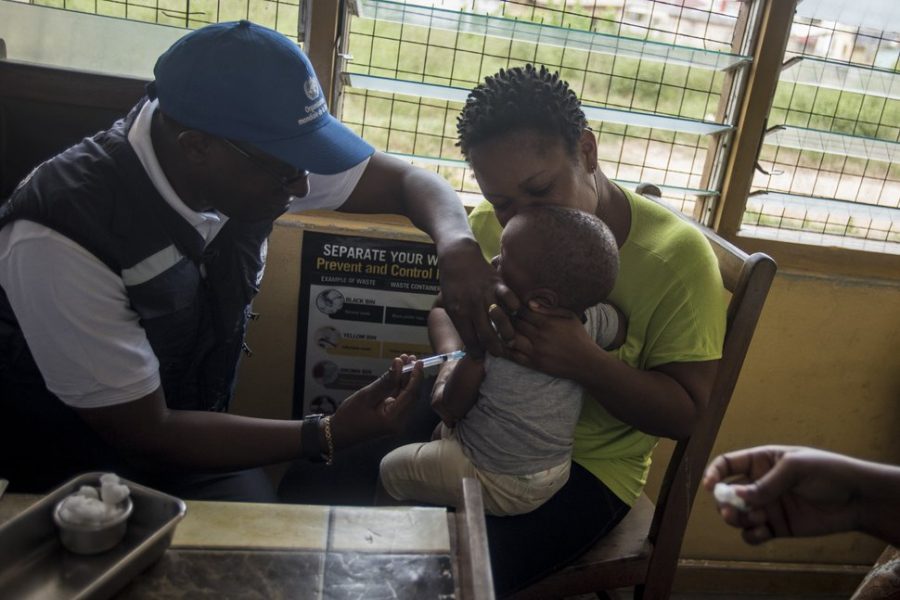World’s First Malaria Vaccine to go to African Countries
CRISTINA ALDEHUELA/AFP/GETTY IMAGES
A doctor with the World Health Organization administers a vaccine to a child at Ewin Polyclinic in Cape Coast, Ghana, on April 30, 2019. In the coming weeks the vaccine will be administered throughout the rest of the country and in Kenya.
May 6, 2019
In the coming weeks, about 360,000 children a year in three African countries will receive the world’s first malaria vaccine in an effort to target eliminating one of the world’s deadliest diseases for children.
The test vaccine called RTS, S, also known as Mosquirix, was created by scientists at the British pharmaceutical giantGSK in 1987. It has taken decades to test and develop, and was supported by numerous organizations including the nonprofit PATH. It was first introduced on April 23 by the government of Malawi in a landmark pilot project that aims at reducing malaria in children through their country’s national immunization programs.
According to the WHO, clinical trials have shown that 4 in 10 malaria cases were prevented by using RTS,S, including 3 in 10 cases of life-threatening severe malaria.
WHO said the vaccine was a “complementary malaria control tool” to be used in addition to bed nets treated with insecticide, spraying indoor areas with insecticides and prompt diagnosis and treatment of the disease.
Alena Pance, senior staff scientist at the Wellcome Trust Sanger Institute, said the vaccine was not “overwhelmingly effective.”
“But it is very important to bear in mind that 40% protection in the most endemic part of the world, Africa, is better than no protection at all. Ultimately, this is the only vaccine that has some efficacy that we currently have and has taken decades to develop. This is in itself good news,” Pance said.
Kenya and Ghana will begin using the vaccine in the coming weeks, with health ministries in these countries deciding where it will be used. The local health departments will decide where the vaccine will be given. “They will focus on areas with moderate-to-high malaria transmission, where the vaccine can have the greatest impact,” said WHO in a statement.


